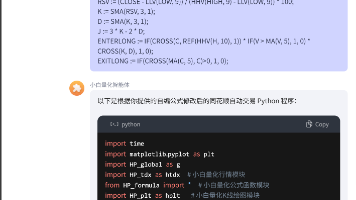How do I configure a stonith device using agent fence_vmware_rest in a RHEL 7 or 8 High Availability
EnvironmentRed Hat Enterprise Linux (RHEL) 7 Update 5Red Hat Enterprise Linux (RHEL) 8Pacemaker High Availability or Resilient Storage Add OnVMware vSphere version 6.5 and above, including 7.0IssueHow
Environment
- Red Hat Enterprise Linux (RHEL) 7 Update 5
- Red Hat Enterprise Linux (RHEL) 8
- Pacemaker High Availability or Resilient Storage Add On
- VMware vSphere version 6.5 and above, including 7.0
Issue
How do I configure a stonith device using agent fence_vmware_rest in a RHEL 7 or 8 High Availability cluster with pacemaker?
Resolution
-
Assuming following is cluster architecture:
- cluster node hostnames are
node1andnode2 - cluster node names as seen by the vmware hypervisor (vCenter) are
node1-vmandnode2-vm - is IP address of vmware hypervisor which is managing cluster nodes VMs
- cluster node hostnames are
-
First check if cluster node is able to reach the hypervisor and list VMs on it. Following command will try to connect to hypervisor with provided credentials and list all machines.
# fence_vmware_rest -a <vCenter IP address> -l <vcenter_username> -p <vcenter_password> --ssl-insecure -z -o list | egrep "(node1-vm|node2-vm)" node1-vm, node2-vm, # fence_vmware_rest -a <vCenter IP address> -l <vcenter_username> -p <vcenter_password> --ssl-insecure -z -o status -n node1-vm Status: ON -
If above list fails, then make sure the below is true
- Node is able to communicate with vCenter on port
443/tcp(when using SSL) or on port80/tcp(without SSL). - Ensure that the user has permissions on vCenter for fencing.
- Check if the vCenter has trustworthy SSL certificate. If the certificate cannot be trustworthy check solution on how to relax some SSL checks.
- Node is able to communicate with vCenter on port
-
If command succeeded the node is able to communicate with hypervisor. Stonith device should be configured using same configuration options as were tested in listing. Some of arguments for the
fence_vmware_restcommand andfence_vmware_restfencing agent in pacemaker can have slightly different name.
For this reason check the help pages of both -fence_vmware_restcommand andfence_vmware_restfencing agent (In diagnostics section is shortened listing of options used by this solution) -
Create the stonith device using command below. The pcmk_host_map attribute is used to map node hostname as see by cluster to the name of virtual machine as seen on vmware hypervisor.
-
The first attribute in
pcmk_host_mapis the cluster node name as seen in/etc/corosync/corosync.conffile and the next attribute, that is post semicolon is the cluster node names as seen by the vmware hypervisor.# cat /etc/corosync/corosync.conf [...] nodelist { node { ring0_addr: node1 <<<=== Cluster node name nodeid: 1 } node { ring0_addr: node2 nodeid: 2 } } # pcs stonith create vmfence fence_vmware_rest pcmk_host_map="node1:node1-vm;node2:node2-vm" ipaddr=<vCenter IP address> ssl=1 login=<vcenter_username> passwd=<vcenter_password> ssl_insecure=1 -
To check the status of stonith device and its configuration use the commands below.
# pcs stonith show Full list of resources: vmfence (stonith:fence_vmware_rest): Started node1 # pcs stonith show vmfence --full Resource: vmfence (class=stonith type=fence_vmware_rest) Attributes: pcmk_host_map=node1:node1-vm;node2:node2-vm ipaddr=<vCenter IP address> ssl=1 login=<vcenter_username> passwd=<vcenter_password> ssl_insecure=1 -
When stonith device is started proceed with proper testing of fencing in the cluster.
Additional notes and recommendations:
- Make sure package fence-agents-4.0.11-86.el7 or later is installed which has new agent
fence_vmware_rest. - fence_vmware_rest works with VMware vSphere version 6.5 or higher, including 7.0
- Please refer to following link for support policies of fence_vmware_rest.
- Once configured, it is highly recommended to test the fence functionality.
- The fence agent fence_vmware_soap causes CPU usage to spike.
- There is a known limitation imposed by the VMware Rest API of 1000 VMs: fence_vmware_rest monitor fails with error: "Exception: 400: Too many virtual machines. Add more filter criteria to reduce the number."
- The fencing agent
fence_vmware_restcurrently does not support using UUIDs for VMs (only support using VM names). If you need to use UUID then usefence_vmware_soap. - The fencing agent
fence_vmware_restworks only with vCentre IP as ESXi host does not provide REST API. If you need to use ESXi host IP then usefence_vmware_soap.
更多推荐
 已为社区贡献3条内容
已为社区贡献3条内容









所有评论(0)